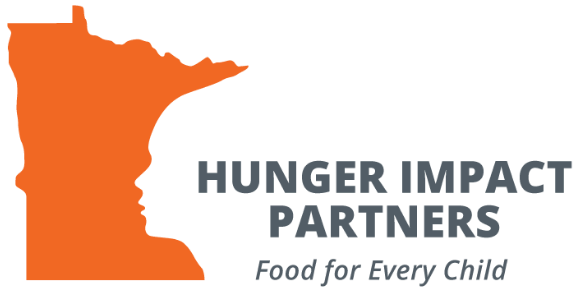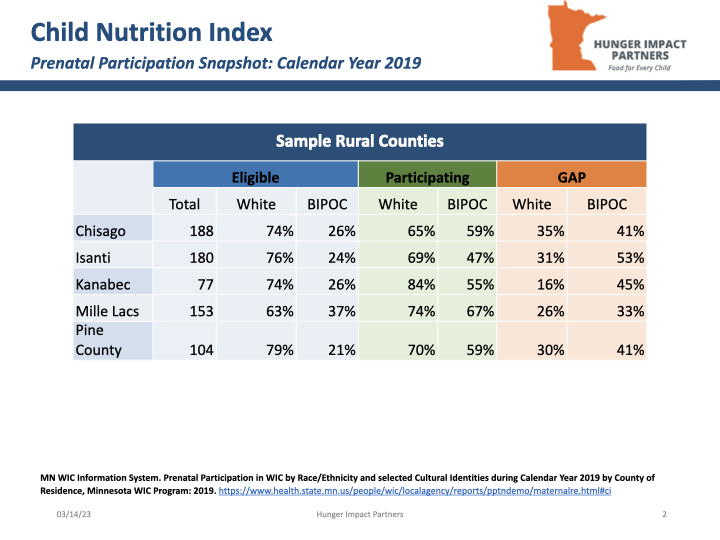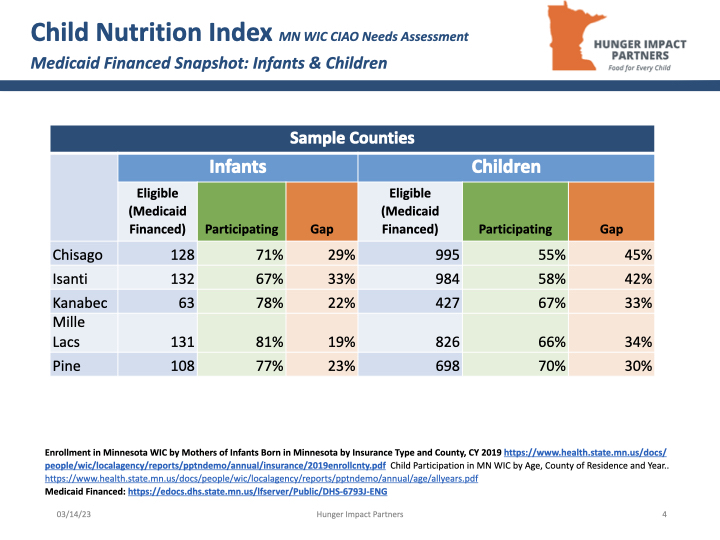Program for Women, Infants & Children
WIC
Hunger Impact Partners targets those experiencing disparities in access and utilization of the WIC program.
Those impacted include mothers, parents, guardians, and those who serve WIC populations targeting rural and urban areas.
Our goal is to improve the health and nutritional well-being of low-income women and their at-risk infants and children through outreach and expanding partnerships to:
• Increase WIC enrollment.
• Increase retention of pregnant women, new mothers, and eligible children up to age 5.
• Increase redemption of WIC benefits.
WIC facts
Minnesota WIC ranks high on 2020 USDA’s Coverage Rates by States, but:
- Only 61.2% of the eligible WIC participants are enrolled in Minnesota WIC.
- Only 52.3% of the 100,400 eligible children are served by Minnesota WIC.
Benefits
Early Minnesota WIC participation improves birth weight
In 2021, fewer Medicaid-funded low-birth-weight infants were born to mothers with three or more months prenatal participation in the program compared tomothers not participating in WIC.
The cost of a low-birth-weight infant hospital stay averages $27,200 more than a normal weight infant.
Opportunities remain to address low birth rates among racial breakdowns.
Increase breast feeding rates
In 2022, Minnesota WIC reports that those who participated in the program early in their pregnancy are more likely to breastfeed.
Meeting breastfeeding recommendations could save $13 billion in national annual medical costs and prevent more than 900 deaths.
Iron deficiencies
Minnesota WIC data confirms the need to continue to work to address low hemoglobin during pregnancy, during third trimester, in postpartum women and for infants & children.
Diversity of children
The Minnesota Department of Education identifies 346 “home languages” for children Pre K-12. Minnnesota WIC provided interpreters for 26 languages for 18,475 participants.
Rural counties specific examples
Travel time to work: At least a third of the workforce spends 30 minutes or longer traveling to work in our rural partner counties. In Chisago and Isanti more than half (53%) of the workforce spent 30 minutes or longer traveling to work.
Broadband: The urban centers of Chisago, Isanti, Kanabec, Mille Lacs, and Pine counties are served by broadband. The remaining territories in these counties show wide expanses of unserved populations with the some of the highest poverty rates in the state.
This will have an impact on outreach and retention strategies in these sparsely populated areas.




